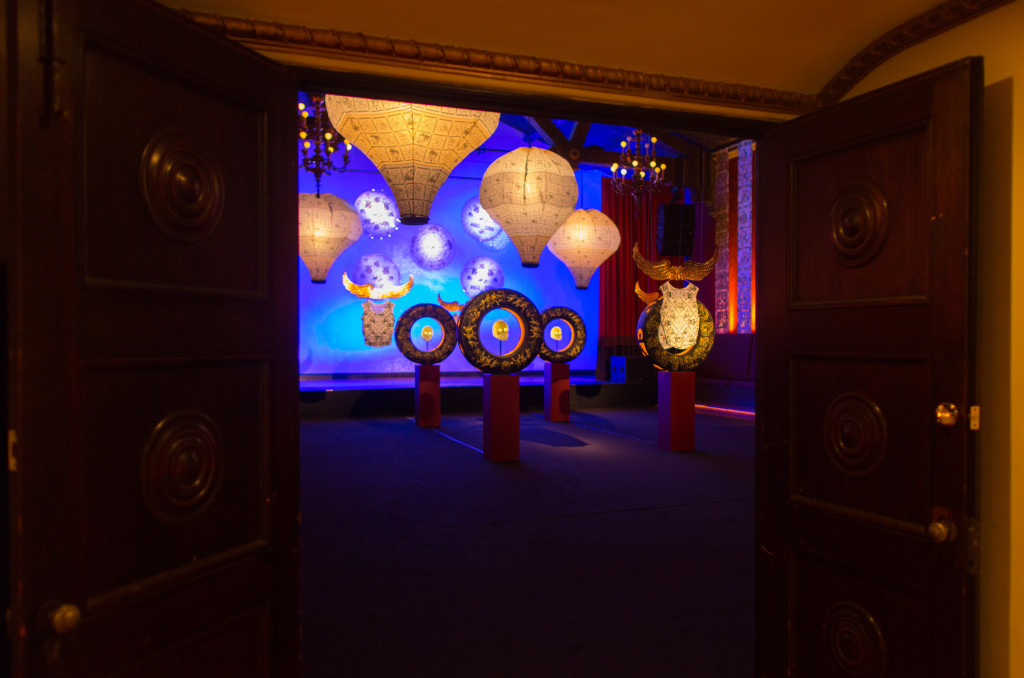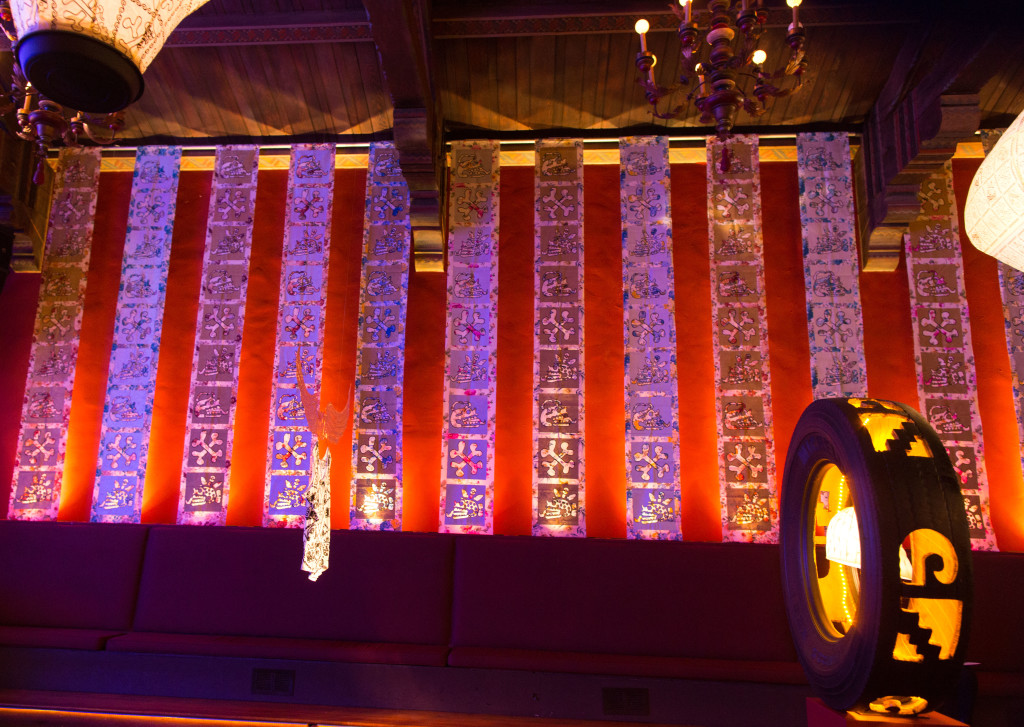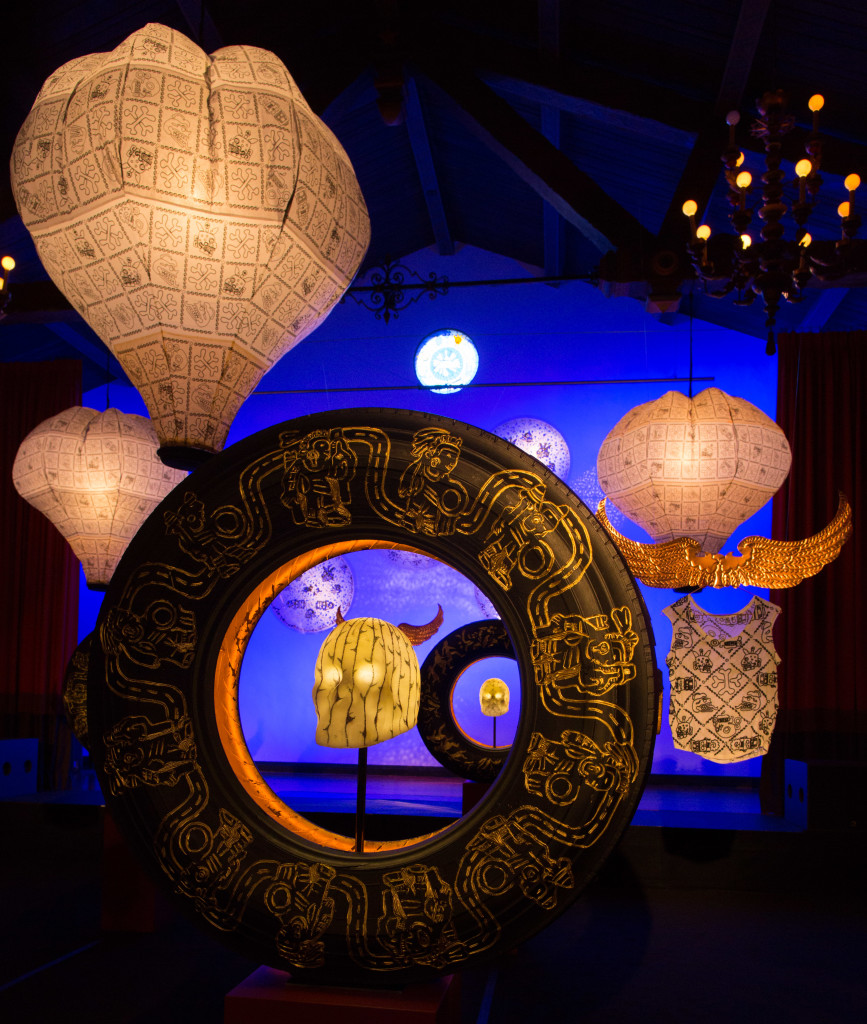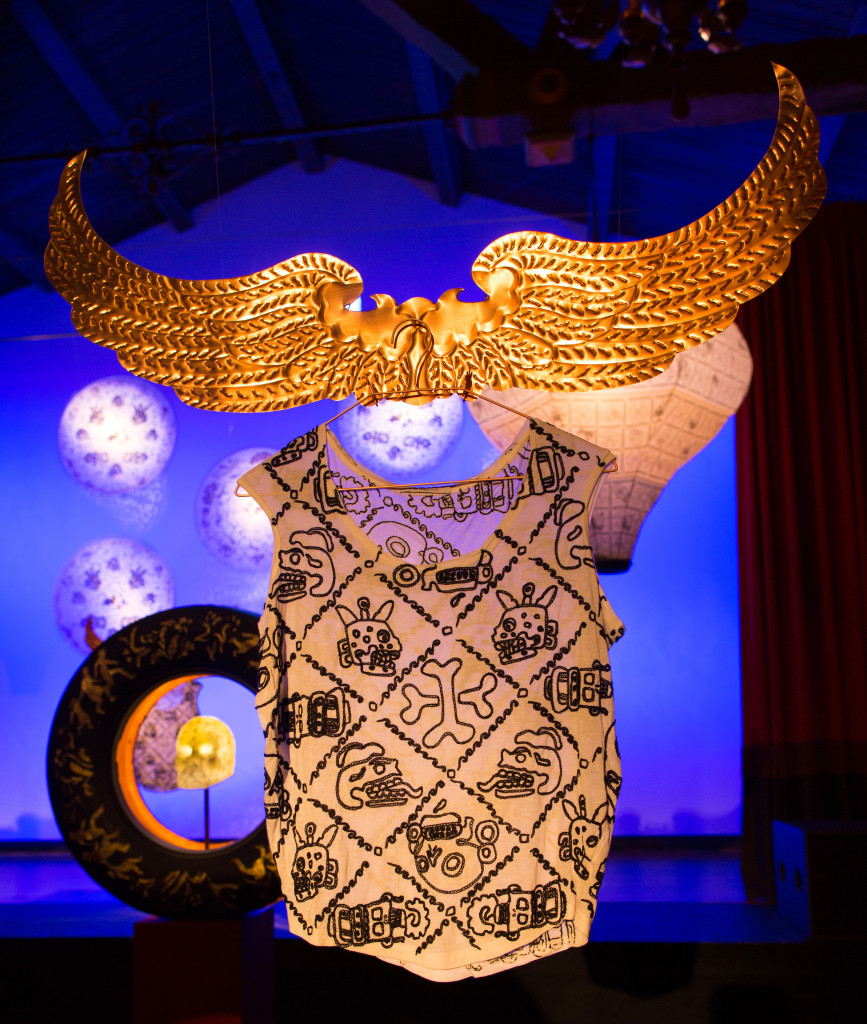All Photos by Jack Burke
One of the most startling and beautiful installation art pieces of recent years was on display at Hollywood Forever Cemetery earlier this summer, inside the art deco-era Masonic Lodge. The site-specific public art installation was created by Mexican contemporary artist Betsabee Romero. Internationally renowned for her fascinating installations, this piece was inspired by both pre-Columbian images and pop culture. Curated by Sylvia Chivaratanod, After and Again – Skull of a Thousand Faces is rooted in poetry, and serves as a platform for artistic textiles and design.
Stunning periwinkle blue and soft gold lighting surrounded the Masonic Hall’s main room, where the walls streamed red and gold banners, delicate white Pima cotton embroidered garments were hung on winged copper hangars, and giant tires served as frames for transparent, glowing skulls. Lit paper balloons soared above the floor in this beautiful merging of textile design and sculpture.
The art of Betsebee Romero – all photos – Jack Burke
The copper wings were crafted by Ernesto Bonilla. Romero created a visceral, moving poem that defines the scope of the exhibit, “Death Flies.” In the piece, she writes “Besides the embroidery and the garments keeping them company…the wings with handcrafted copper feathers..delicately open to honor and uphold the textiles…the hands that spend hours drawing lines, faces, patterns of silk…skulls that are illuminated by imprinted flowers.”
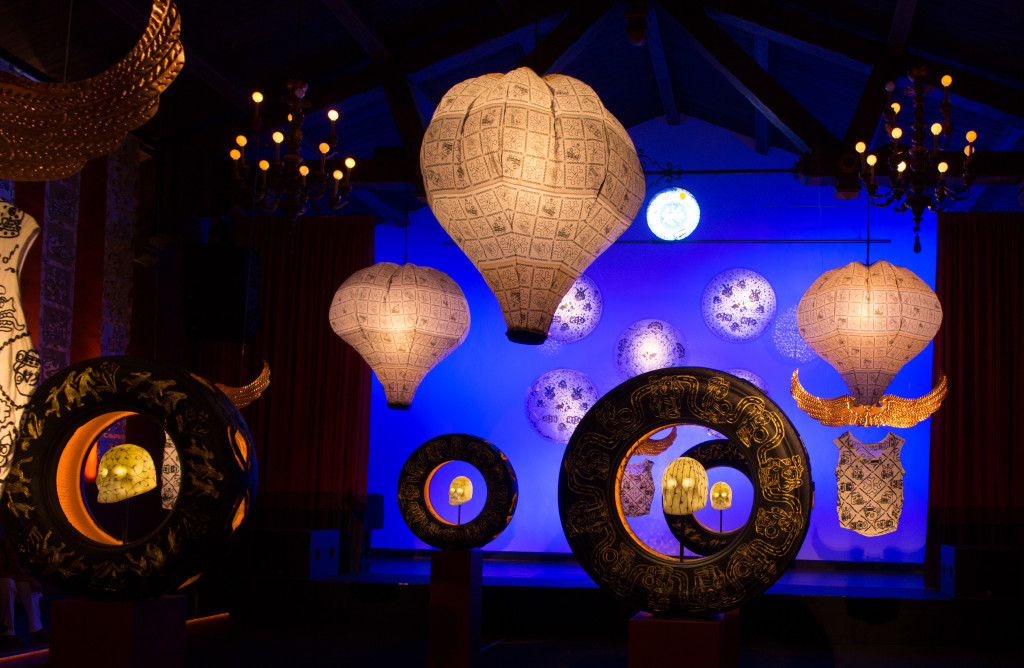
In conjunction with the installation, Romero has available 200 numbered copies of a limited edition signed and numbered box, containing a Pima cotton garment, copper wing sculpture, and a hand-printed photograph of the artist.
This magical installation piece worked both as a celebration of textile-driven art, and as a moving tribute to life and death, or as Romero writes, “the fragile beauty of impermanence.” It offers a fascinating and insightful exploration of the processes, materials, and creation of art itself. To see more of Romero’s work, visit LACMA and MOCA, where several of her creations are a part of both museums’ permanent collections.

- Genie Davis; all photos by Jack Burke


